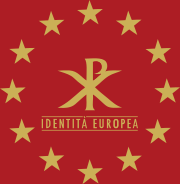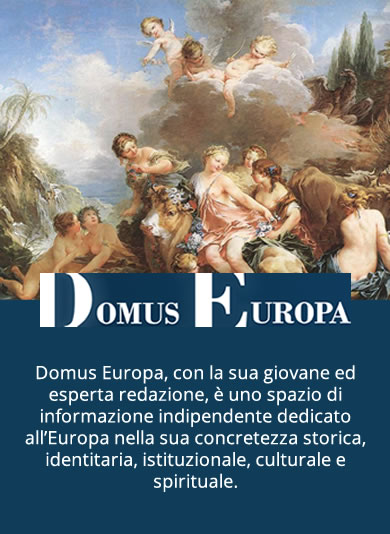 In 2013, Slovakia will celebrate jubilee for 1.150 years from the beginning of the evangelizing mission of the Saints Constantine-Cyril and Methodius. In anticipation of this anniversary the Slovak Central Bank wanted put into circulation a commemorative coin, the value of two euro. The proposed design for the face of the money intended to represent the two saints according to the iconographic tradition, with the cross on vestments liturgical and a halo around his head. The European Commission has blocked this initiative by raising objections to depict whether the two saints with halos and the cross on vestments, arguing that it representation could cause injury to the principle of religious neutrality.
In 2013, Slovakia will celebrate jubilee for 1.150 years from the beginning of the evangelizing mission of the Saints Constantine-Cyril and Methodius. In anticipation of this anniversary the Slovak Central Bank wanted put into circulation a commemorative coin, the value of two euro. The proposed design for the face of the money intended to represent the two saints according to the iconographic tradition, with the cross on vestments liturgical and a halo around his head. The European Commission has blocked this initiative by raising objections to depict whether the two saints with halos and the cross on vestments, arguing that it representation could cause injury to the principle of religious neutrality.
According to the Commission the two symbols in question, the halo and the cross, producing a reference too explicit to Christianity and therefore are likely to lead to violations of the principle of secularism Community institutions. The National Bank of Slovakia was then forced to modify the draft coin design and make the representation of the two saints without symbols considered inadequate by Commission.
It is a difficult decision to understand in the light of the history of our continent, the common religious tradition and, above all, the extraordinary importance that the works of Cyril and Methodius, patrons of Europe, together with Saint Benedict of Norcia, had unifying cultural of the peoples of Eastern Europe with those of the West.
Having said that asking the Commission if:
1) considers it important the preservation of a common identity of European history, which also includes the protection of its religious symbols?
2) consider that the cancellation of Christian symbols from a commemorative coin is an effective way to preserve the common historical identity of the peoples of Europe?
3) Does that adopting an approach of this kind runs the risk of conveying a historical view distorted because deprived of its real symbolic context?
4)In order to bring the peoples of Europe to the common cause of European integration is no longer circumspect, by the Commission, promote the cultural and religious rather than distort or even deny it?
5)If the name of the principle of religious neutrality is willing in the future to propose to the Member States to also delete the crosses depicted in their respective national flags and / or the crosses that stand on towers and cathedrals throughout Europe.
On. Sergio Berlato, P.p.e.
Protection de la mémoire historique commune européenne et ses symboles
En 2013, la Slovaquie va célébrer le jubilé pour 1150 ans après le début de la mission évangélisatrice de Saints Constantine-Cyrille et Méthode. En prévision de cet anniversaire la Banque centrale slovaque a voulu la mise en circulation d’une pièce commémorative, la valeur de deux euros.
La conception proposée pour le visage de les pieces destiné à représenter les deux saints, selon la tradition iconographique, avec la croix sur les vetements liturgique et une auréole autour de sa tête.
La Commission européenne a bloqué cette iniziative en augmentant objections à dépeignent si les deux saints avec des halos et la croix sur le vetements, en faisant valoir qu’il représentation pourrait causer des blessures au principe de la neutralité religieuse. Selon la Commission, les deux symboles en question, l’auréole et la croix, produisant une référence trop explicite au christianisme et sont donc susceptibles d’entraîner des violations du principe de laïcité des institutions communautaires.
La Banque nationale de Slovaquie a ensuite été contraint de modifier le projet de la conception des pièces et rendre la représentation des deux saints sans symboles jugées inopportun par la Commission. C’est une décision difficile à comprendre à la lumière de l’histoire de notre continent, la tradition religieuse commune et, surtout, l’extraordinaire importance que les oeuvres de Cyril et Méthode, patrons de l’Europe avec saint Benoît de Norcia, avait rassembleur culturel des peuples de l’Europe de l’Est ceux de l’Ouest.
Cela dit demander à la Commission si:
1) Estime qu’il est important de préserver une identité commune de l’histoire européenne, qui comprend
également la protection de ses symboles religieux?
2) Considérer que l’annulation de symboles chrétiens d’une pièce commémorative est un moyen efficace
pour préserver l’identité historique commune des peuples d’Europe?
3) Est-ce que l’adoption d’une approche de ce type cour le risque de transmettre une vision historique faussés
parce que privée de son contexte symbolique réel?
4) Dans le but d’amener les peuples de l’Europe à la cause commune de l’intégration européenne n’est plus
circonspect, par la Commission, promouvoir le développement culturel et religieux plutôt que de déformer
ou même le nier?
5) Si au nom du principe de la neutralité religieuse est prêt à l’avenir de proposer aux États membres de
également supprimer les croix représentées dans leurs drapeaux nationaux et / ou les croix qui se dressent
sur des tours et des cathédrales à travers l’Europe.
On. Sergio Berlato, P.p.e.











